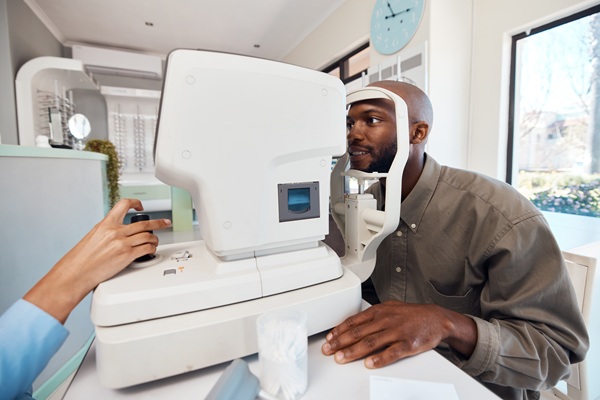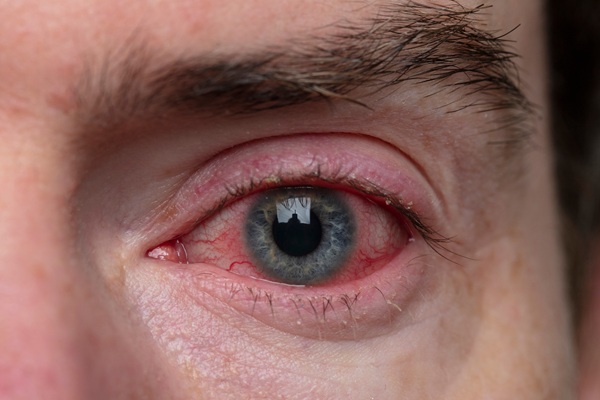What Are Progressive Lenses?

Various eyeglass options are available today, from single-vision to bifocal and trifocal lenses. However, some prefer multifocal lenses with no visible line, like progressive lenses. These lenses provide their wearers with three zones of vision: near, middle, and far. They are a popular choice for people with presbyopia, a condition that typically develops in the aging process and reduces the eye's ability to focus on close or far-away objects. But what exactly are progressive lenses? Here is what you should know.
An overview of progressive lenses
Progressive lenses, also known as progressive addition lenses (PALs), are multifocal lenses that provide more than one area of focus to help a person see clearly at different distances. Unlike bifocal or trifocal lenses, which have visible lines separating different prescription strengths, progressive lenses provide a smooth transition between the power of each lens. This design allows the wearer to see no matter the distance and without the abrupt jumps in vision correction that can occur with other lenses.
The top part of the lens is optimized for distance vision, allowing the wearer to see clearly when looking straight ahead. The power gradually increases as the eye moves downward through the lens, providing a middle zone for intermediate distances, such as computer or TV screens. Finally, the bottom part of the lens has a stronger prescription for reading or other close-up tasks. As a result, the patient achieves a more natural visual experience, mimicking their eye's natural ability to adjust focus.
Types of progressive lenses
There are various types of progressive lenses available. An optometrist can tailor each of them to different needs and lifestyles. Standard progressive lenses are ideal for general use, but there are specialized types as well, including:
- Premium progressive lenses: This type of progressive lens is custom-made for the patient. They account for which eye is more dominant.
- Computer progressive lenses: Also known as near variable focus lenses, these lenses are often recommended for people who spend more than four hours using a computer indoors. They can reduce eye strain and improve comfort during screen time.
- Short-corridor progressive lenses: These progressive lenses are designed for patients who prefer smaller or more compact eyewear.
- Ground-view progressive lenses: These are often recommended for people who have to look down at the ground a lot, such as golfers.
- Transition progressive lenses: This type of progressive lens automatically darkens when exposed to ultraviolet (UV) rays. They can then transition back to normal once the wearer goes inside.
The benefits of progressive lenses
Appearance
One of the most popular benefits of progressive lenses is their appearance. Since they do not have visible lines like bifocals or trifocals, they look like regular single-vision glasses. It can be particularly beneficial to people who do not want their glasses to reveal their multiple prescriptions or who do want to appear younger.
Versatility
Progressive lenses cater to various vision needs in a single lens. This reduces the need to have several pairs of glasses for different activities, such as reading, driving, or using a computer. Progressive lenses can accommodate all these tasks in one pair of glasses.
Comfort
Vision with progressive lenses can often seem more natural than bifocals or trifocals. Switching from viewing something up close to something far away will not cause a "jump" or abrupt transition. For example, if a person is driving, they can look at their dashboard, the road, or a sign in the distance in a smooth transition from object to object. This can help reduce eye strain and make it easier for the individual to adapt to different viewing distances.
Adjusting to progressive lenses
Progressive lenses require an adjustment period. Patients must train themselves to look out of the lower part of the lens when reading, look straight ahead for far-distance objects, and look between the two spots for middle-distance tasks, such as computer work or other screen time. During this adjustment period, some people may feel dizzy or nauseous due to looking through the wrong section of the lens for a specific activity. There may also be a slight distortion of their peripheral vision.
It is important to be patient and take the necessary time to adjust. It can take a few days to weeks for the brain to adjust to the new way of seeing. Wear the new glasses as much as possible to speed up the adjustment period. Additionally, work with the optometrist to ensure the fit and lens customization are correct, as poorly fitted progressive lenses can make the distortion worse and adaption more difficult.
Call our office to schedule an appointment
Progressive lenses are an ideal eyeglass option for people with nearsightedness and farsightedness. While they may require an adjustment period, they offer a variety of benefits that can help improve your eyesight and overall quality of life. Are you wondering if you could benefit from progressive lenses? Call our office to schedule an appointment.
Request an appointment here: https://www.texasoptical.net or call Texas Optical at (214) 771-7333 for an appointment in our Dallas office.
Check out what others are saying about our services on Yelp: Read our Yelp reviews.
Recent Posts
Contact lens exams are fundamental to maintaining clear vision and promoting overall eye health. Many individuals rely on contact lenses for daily activities, sports, and social events, yet consistent monitoring of lens fit and eye condition often receives less attention than it deserves. An optometrist specializing in evaluating the cornea, tear film, and general ocular…
Red, irritated eyes can result from something as simple as fatigue or dryness. However, persistent or severe symptoms may indicate a more serious condition requiring red eye treatment from an optometrist. Understanding when those everyday symptoms become something more serious is key to protecting long-term vision and avoiding complications. Catching the signs early on and…
Vision health is an important part of your everyday life. When urgent and unexpected issues arise, you must seek emergency eye care from an optometrist. Whether the issue results from trauma, infection, or sudden changes, immediate attention from an optometrist can prevent complications and preserve your long-term ocular health.Individuals may need emergency eye care for…
A myopia optometrist can help manage and slow the progression of nearsightedness, especially in children and young adults. Nearsightedness, or myopia, causes distant objects to appear blurry while close-up vision remains clear. Without proper care, myopia can worsen over time, leading to higher prescriptions and an increased risk of eye health problems.Myopia occurs when the…


